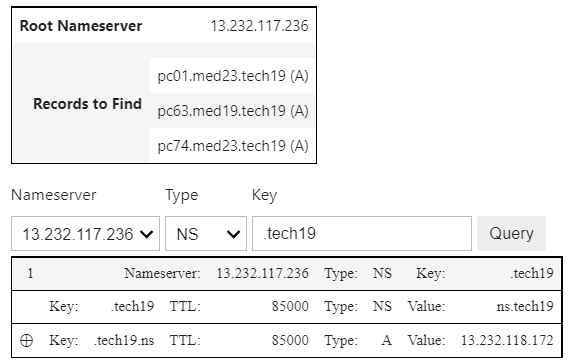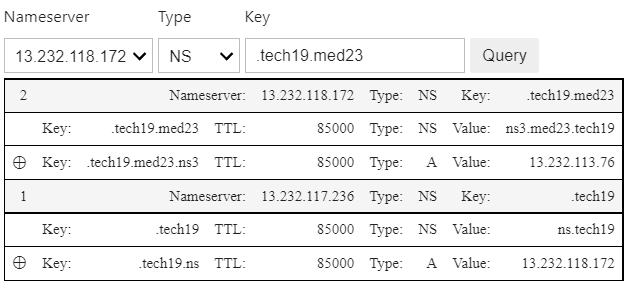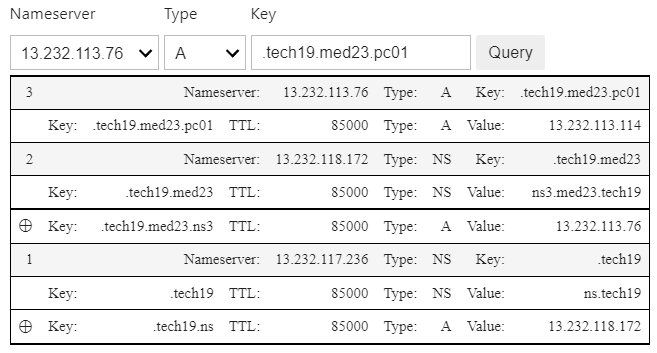Lab - 9: DNS¶
Objectives¶
The lab is on observations of:
DNS name to IP address resolution
Role of the DNS server in a network
Some common types of DNS records
Load Lab Network¶
Instead of building a topology, we will use the lab system DNS activity. Access this by executing the following commands in the notebook:
%load_ext uhed
%dns
Interactive Activity¶

DNS activity as initially displayed in the notebook¶
Initially, you will be presented three records, or fully qualified domain names (FQDNs), for which you will need to query DNS servers in order to resolve the FQDNs to IP addresses.
The root nameserver IP address is provided at the top. Below the table, there is a row with three fields: Nameserver,
Type, and Key. The Nameserver field is a dropdown menu containing IP addresses of various entities.
The Type field is another dropdown menu to select the record type (i.e. A for address, NS for nameserver, etc.)
The Key field is a text box for entering the record key for each step: the portion of the FQDN for which you want to
search.
Each DNS query will require its own row. Fill in the appropriate fields and press the Query button.
The result of the query will be added to the table below the query row. Successful queries will contain useful information toward your ultimate goal of resolving the FQDN to an IP address. Continue making queries until you have retrieved an A record for the FQDN.
Querying the Root DNS server¶
Begin by querying the root DNS server at the provided Root Nameserver IP address. You will need to query for a nameserver (NS)
record for the top-level domain.

First query is to the NS record of the top-level domain .tech19.¶
Note in the above figure, we are given the authoritative nameserver for the .tech19 domain. The response also contains additional
information in the form of the address (A) record of that nameserver. This information is required so the querying host knows the
IP address of the next nameserver to which the following query will be sent.
Note
Note: the first query to the top-level domain is preceded by a ".", as in .tech19.
Querying the Next DNS Nameserver¶
Now, we must query this top-level domain nameserver for the next subdomain in the FQDN (.tech19.med23). The query must be sent
to the address corresponding to the nameserver, as provided in the response to the previous query.

Again, this nameserver has returned the name for the authoritative nameserver for this final subdomain, as well as the A record
for this nameserver. Remember, this additional information is required for the next DNS server to be addressed.
Querying the Final DNS Nameserver¶
Finally, we make a query to this last nameserver for the full FQDN (pc01.med23.tech19). Since this is the authoritative
nameserver for the host for which we initiated the query, we will now request the address (A) record.

This final response contains the IP address of the host with the name pc01.med23.tech19. Through this series of
DNS queries we have resolved the given FQDN, pc01.med23.tech19, to the IP address 13.232.113.114.
Lab Task¶
Load the DNS activity by executing %dns in a cell in the
notebook. Complete the DNS query series for the three
provided records.